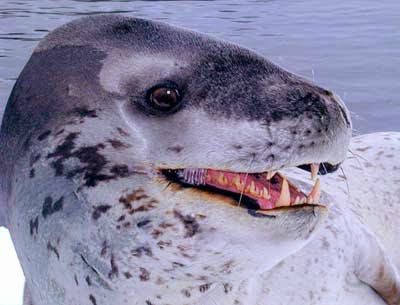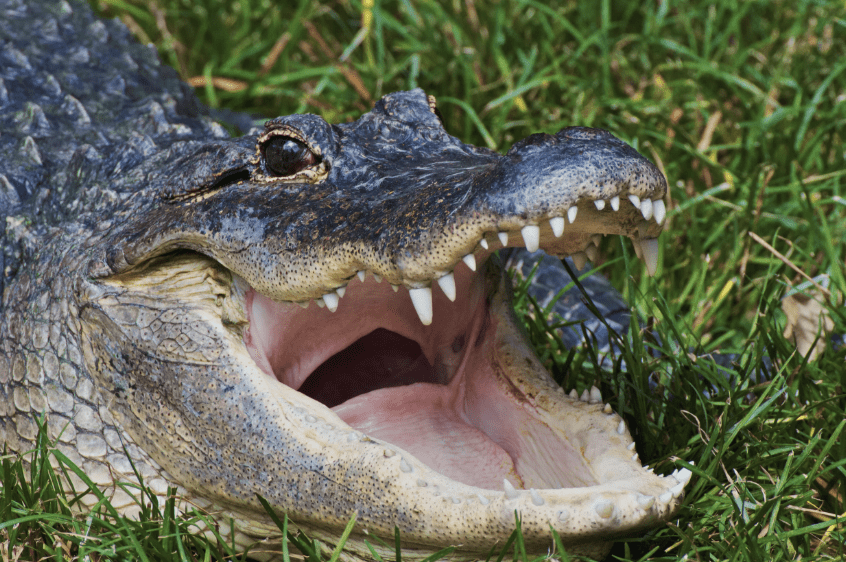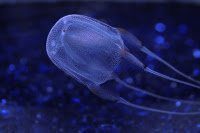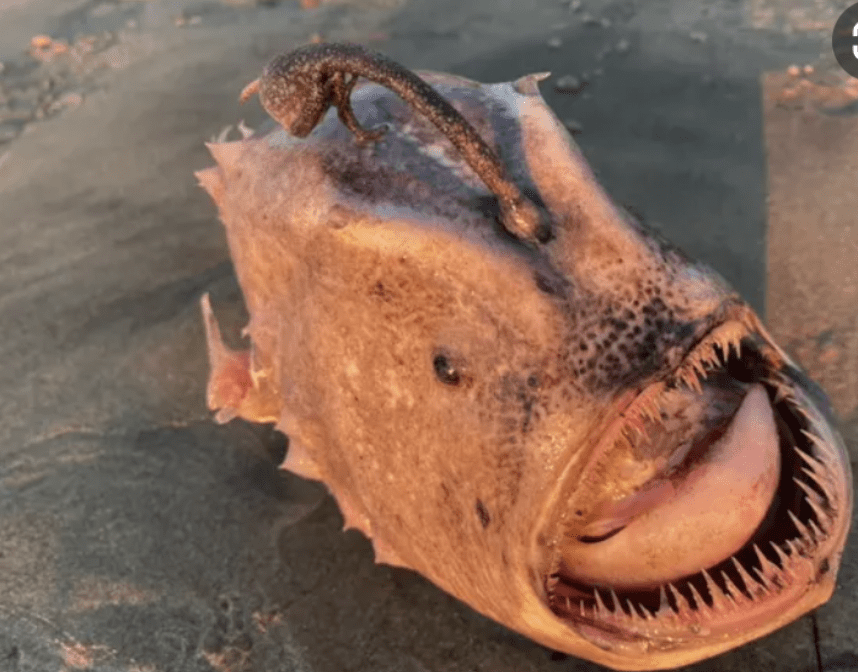
Open water swimmers have ever-growing opportunities to venture beyond the shorelines around the world. They can challenge themselves to the Oceans Seven, various kinds of Triple Crown swims, stage swims (continuous and non-continuous, contiguous and non-contiguous), ice swims, mass participation swims, and any number of new unprecedented swims in lakes, seas, and oceans that they can think of.
Swimmers have been stung by jellyfish in all the Oceans Seven channels, sometimes a lot, sometimes only once to twice: English Channel, Catalina Channel, North Channel, Tsugaru Channel, Molokai Channel, Cook Strait, and Strait of Gibraltar. There have also been shark encounters in several of these channels over the years.
But as increasing number of swimmers attempt unprecedented swims around the world, encounters with other potentially harmful marine creatures will increase.
Lewis Pugh explains what he had to do when swimming above the Arctic Circle and along the frozen coastline. “We throw rocks into the water near the shore. Leopard seals [shown above] hide under the ice shelf waiting for their prey to jump into the water, so we can see if the leopard seals come out. If the seals are there, I do not get in.”
Other potentially dangerous creatures in the open water include:
Polar bears are found in the Arctic. They may look cute, but they are extremely dangerous. They are one of the few animal species that will hunt a human. They do not fear man and can move very quickly. Countermeasure: Immediately get out of the water, into an escort boat, and move quickly to safety.


Nile crocodiles [shown above on left] are found in many rivers and lakes in Africa. They are patient. They wait. They are ambush predators. It is difficult to see them – because most rivers and lakes are murky. Not many people survive a crocodile attack. Countermeasure: Immediately get out of the water, into an escort boat, and move quickly to safety.
Alligators [shown above on right] are found in the United States (American alligator) and China (Chinese alligator). See the above countermeasures of crocodiles.
Hippopotamus kill more people in Africa than any other marine animal. A bite from a hippo is an extremely serious wound. Countermeasure: Immediately get out of the water, into an escort boat, and move quickly to safety.
Leopard seals are found off the Antarctic continent. They bark a blood curdling hiss when swimmers get near, baring razor sharp teeth. One moment they will kill a penguin and drop it in front of a swimmer as a gift. The next moment they are trying to bite human legs. Countermeasure: If in the water, immediately get out of the water, into an escort boat, and move quickly to safety.
Great white sharks are found in many coastal and offshore waters and are commonly seen along the coasts of the United States, South Africa, Australia, New Zealand, Chile, and Japan. Juvenile great whites frequently stay in shallow, nearshore nurseries, such as those found off Southern California and Long Island, New York. Surprisingly, number of people survive great white attacks. Countermeasure: Immediately get out of the water, into an escort boat and move quickly to safety.


Sharks have been in the oceans for over 420 million years. The sharks to worry about for a channel swimmer or marathon swimmer include bull sharks, hammerhead sharks, tiger sharks, mako sharks, Greenland sharks, cookiecutter sharks, sand sharks, blue sharks, and oceanic white tip sharks. Countermeasure: Immediately get out of the water, into an escort boat and move quickly to safety, although some swimmers stay in the water dependent upon the shark behavior and proximity, and the judgment of their support team.
Box jellyfish are found in warm coastal waters worldwide including the Indo-Pacific region, Australia, Gulf of Mexico, throughout the Caribbean Sea, Hawaii, and Florida. Their sting can be fatal and are among the most venomous in the world. Countermeasure: Almost impossible to avoid in certain times of the month just before sunset and in the night. Upon being stung, get immediate help.


Orcas are found in all oceans worldwide, but they are most densely concentrated in colder, coastal regions, but their adaptable nature allows them to be seen in temperate and tropical areas as well, often following their prey. They are frequently sighted in the North and South Pacific, the Northeast Atlantic (around Norway and Iceland), Antarctica, and the waters off British Columbia. They can handle themselves well against the Great White Shark. Enough said. Countermeasure: Immediately get out of the water, into an escort boat and move quickly to safety.
Sea snakes are found in the tropical and subtropical water of the Indian Ocean and Pacific Ocean. While most species stay in coastal areas like coral reefs and estuaries, the yellow-bellied sea snake is an exception, found in the open ocean and ranging from the eastern Pacific to the Indian Ocean. The air-breathing aquatic snakes have some of the most potent venom of all snakes. Some have gentle dispositions and bite only when provoked, but others are much more aggressive and teeth may remain in the wound. Countermeasure: Immediately get out of the water, into an escort boat and move quickly to safety.
Needlefish are are found usually in shallow coastal waters near the surface in the Atlantic, Pacific, and Indian Oceans, as well as in many freshwater and estuarine systems. These slender fish have long, narrow jaws filled with multiple sharp teeth and can jump out of the water at high speeds over the decks of shallow boats, especially when attracted by light at night. Countermeasure: Immediately get out of the water, into an escort boat and move quickly to safety. Do not wear anything that illuminates or reflects light (even moonlight).
Piranha are found in freshwater rivers and lakes of South America especially in the Amazon River, Orinoco River, and Paraná River. Some species have been found in places from the United States to Bangladesh. Known for their sharp teeth and a voracious appetite for meat, the total number of piranha species is unknown with estimates ranging from fewer than 30 to more than 60. Countermeasure: Immediately get out of the water, into an escort boat and move quickly to safety.


Ussuri brown bear (also known as the Ezo brown bear) live in northern Honshu and Hokkaido in Japan, eastern Russia, the islands of Siberia, northeastern China, and North Korea. The brown bear is significantly larger and more dangerous to humans than the Asian black bear and is the primary cause of most serious attacks and deaths in northern Japan. ountermeasure: Immediately get out of the water, into an escort boat and move quickly to safety.
Yesterday, a 1.5-meter long brown bear was found this week swimming offshore in Mutsu Bay, relatively near the Tsugaru Channel. Aomori Prefecture has recently seen a record number of bear sightings are hitting a record high. Since April this year, there have been at least 13 deaths and over 100 injuries due to bear attacks in northern Japan. Swimmers of the Tsugaru Channel are strongly advised to refrain from hiking in the sparsely populated area before or after their channel attempts.
Ross Edgley and his support team had to be similarly aware of bears both on dryland and in the Yukon River in western Canada during his non-stop 54 hour 45 minute 510 km drift swim in 2024.
There are many other marine creatures that open water swimmers should be cautious of, including homo sapiens, lancetfish [shown below on right], anglerfish [shown below on left], sea pickles [that can grow up to 20 meters], and Portuguese man o war.


© 2025 Daily News of Open Water Swimming
“to educate, enthuse, and entertain all those who venture beyond the shoreline“
World Open Water Swimming Federation, a human-powered project.